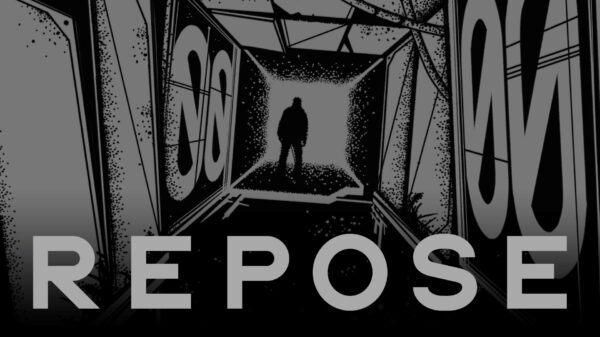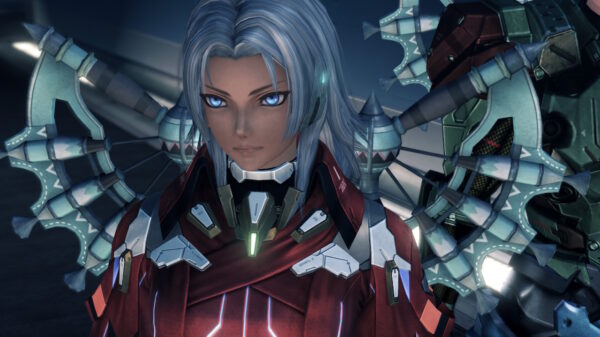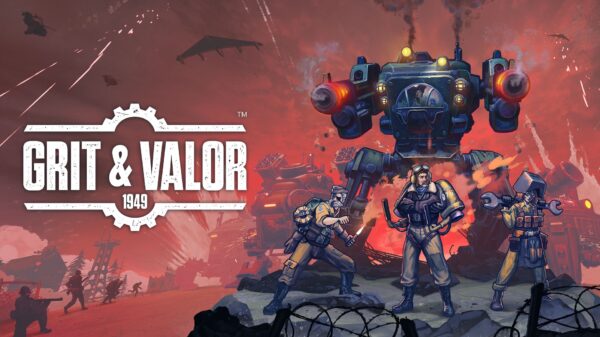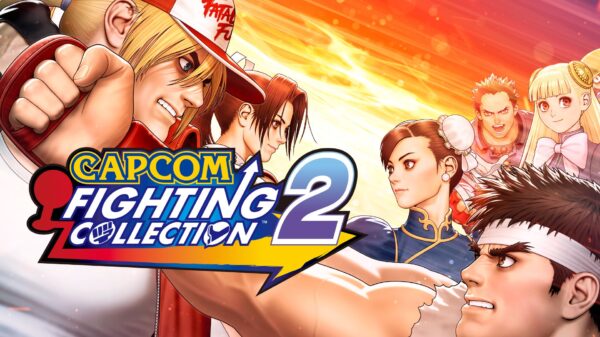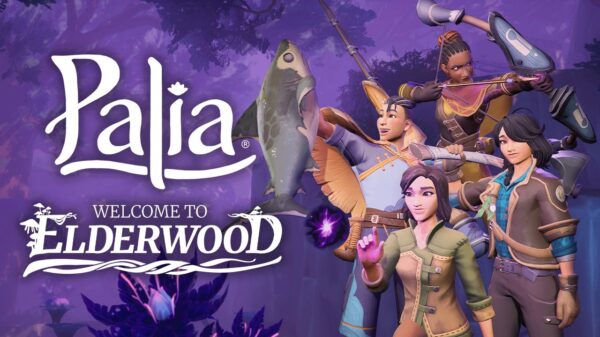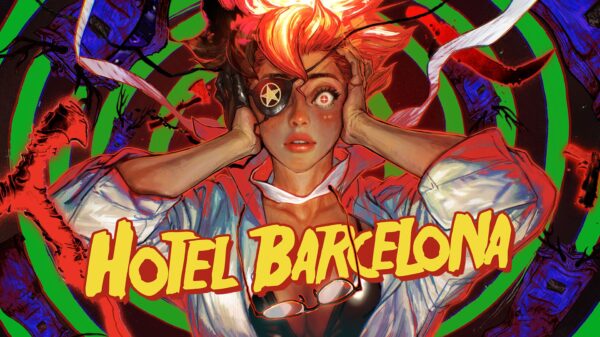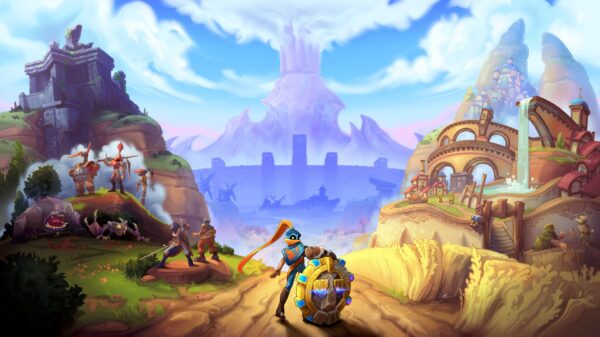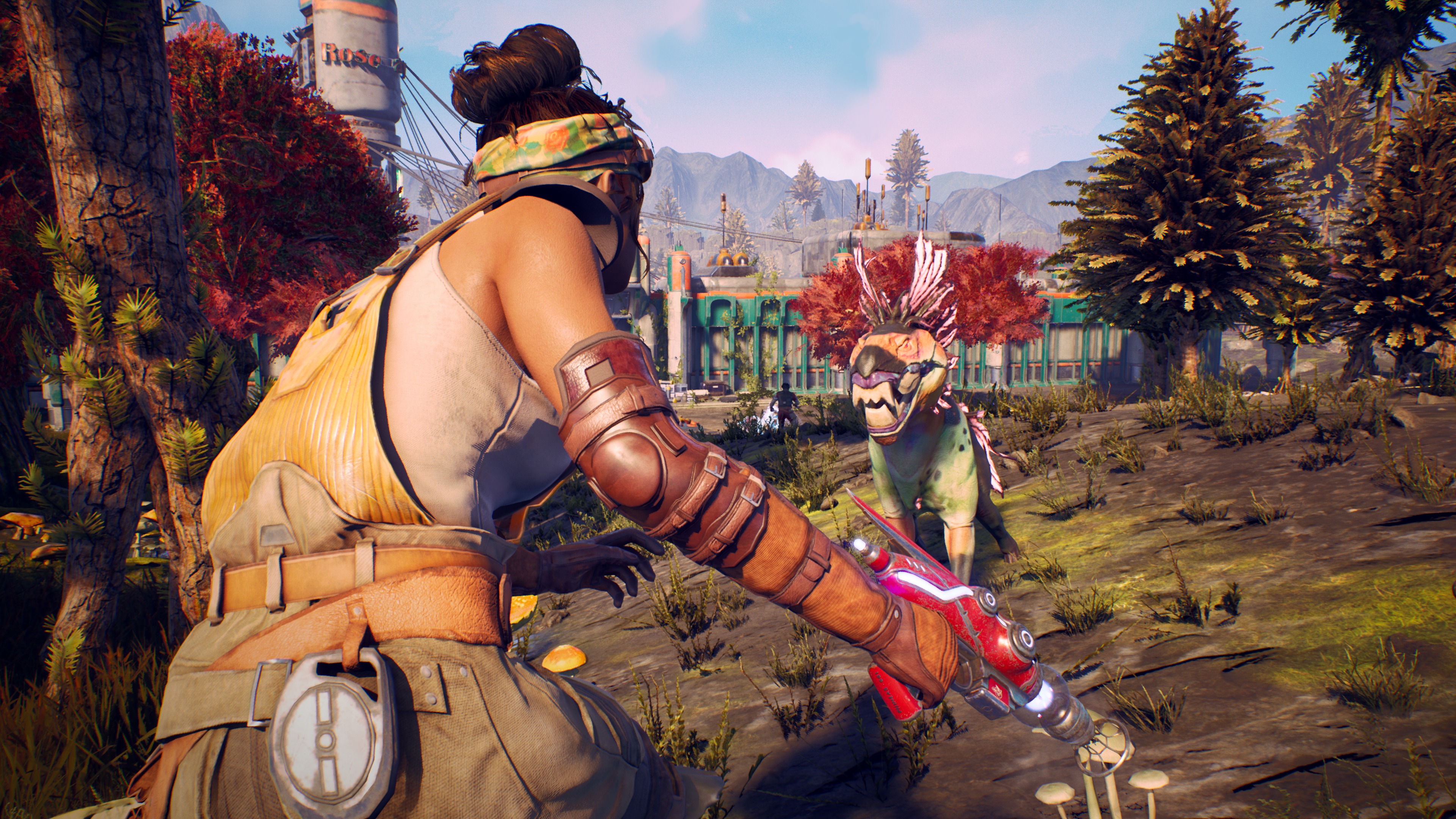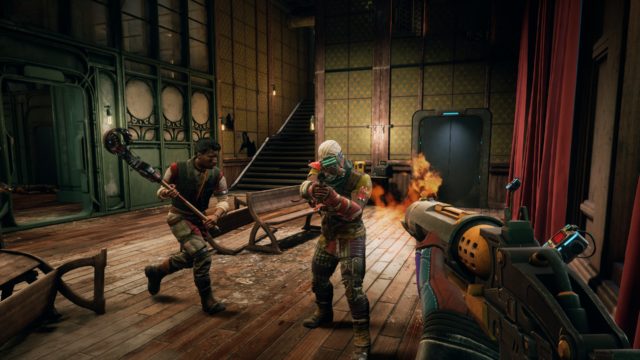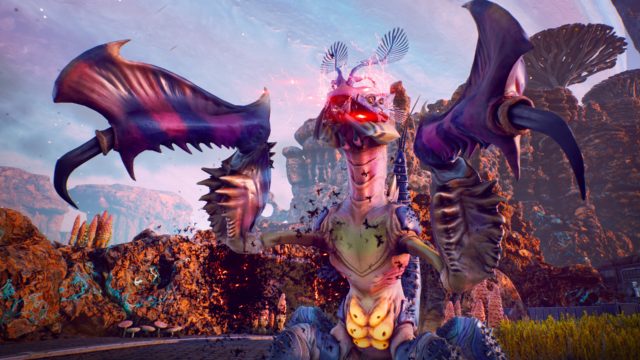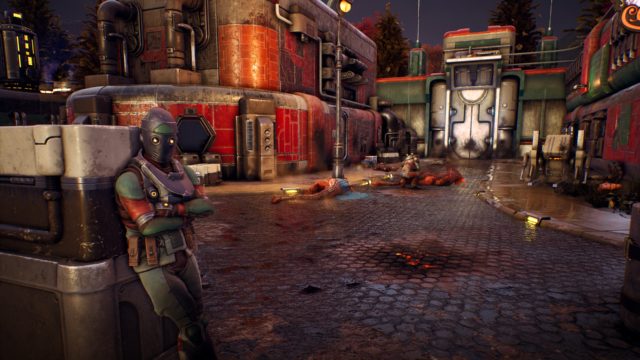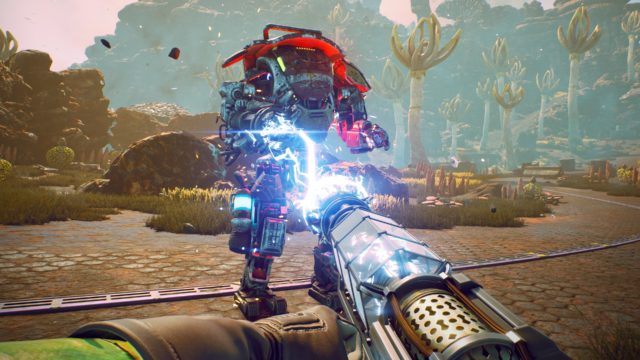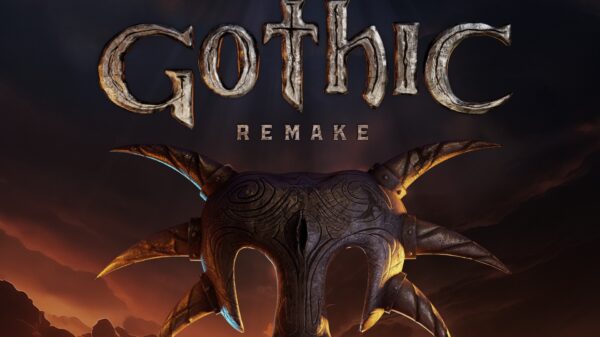Obsidian Entertainment is in the final months leading up to the release of their next RPG, The Outer Worlds. The game, which releases in October of this year, is being shown in hands-on previews this summer. At a recent event in Santa Monica, CA., I had a chance to play the upcoming sci-fi adventure. While the game has been noted as a spiritual successor to Fallout: New Vegas, which Obsidian developed, the game has a lot of inspirations pulled from across their catalog of titles. This is a game seeped in the studio’s RPG experiences from Star Wars Knights of the Old Republic 2, to most recently, Pillars of Eternity.
The preview set me on the surface of Monarch, its volatile surface the result of failed terraforming. In my time exploring the moon-based colony I encountered numerous marauders, and even more dangerous wildlife in the form of giant bugs and lizards. You’ll use several of the tools you would expect to have access to in this style of game for dispatching enemies. Depending on how you build your character, you may be far more effective in close combat with a focus on melee weapons. Or maybe you’re more of a ranged fighter and want to rely more on your first-person-shooter skills.
All the enemies have their own traits and attack styles that will influence your approach to each encounter. Luckily, the game’s “Tactical Time Dilation” helps slow everything down (literally) to give you an edge. In “Time Dilation” the game goes in slow motion as you can make tactical decisions similar to the “VATS” system in the modern Fallout games. Slowing down time is not just for making it easier to pick your shots however; the system provides you quick information on your enemies like weak points, armor stats and special attacks. Think of it like a bestiary on the go. You’ll learn useful info like special attacks your enemy will do, for example, a “Mantiqueen” will absorb damage you deal and then releases it in a plasma blast.
Another benefit of the “Time Dilation” mechanic is that it provides you with potential status effects that correspond with specific body parts. If I shoot at a marauder’s leg, I have a chance of crippling or maiming them, which will open up more tactical options for me.
On your journey, you’ll have the option of recruiting companions that will directly impact the way you build your character. Outer Worlds gives you options for choosing companions’ behavior in combat. During the demo, I set one of my companions, Nyoka, to aggressively attack enemies with only a ranged weapon. For my other party member, Parvati, I had her only use a melee weapon, which was a hammer that dealt the most DPS out of our party. To balance out my team, I stuck to a sniper rifle, which allowed me to crowd control smaller enemies in combat while I directed my two AI buddies to focus their attention on the larger damage absorbing enemies like the “Mantiqueen.”
The companions can also provide buffs to your stats just by being in your party. You can equip Nyoka with a perk that grants your character extra points to the “lie” skill. This can have an impact in the way you build out your character. Even if there’s not a direct buff that comes from having a specific companion in your party, they will most likely have stats that can help compensate for your character’s shortcomings.
Because of the focus on companions and the way their skills, stats, and perks can play off your own, Outer Worlds starts to feel more like a party-based RPG. While the game has its obvious Fallout: New Vegas similarities, it also feels like their most recent series, Pillars of Eternity, has left an imprint as well. While Pillars is far more complex than what is going on here, I still found myself constantly thinking about the composition of my party. Aside from just managing your own character, it feels worthwhile to think tactically about the way you build out your companions.
During E3, Obsidian walked through a quest for media in attendance. In that quest, the player character infiltrated a factory using stealth before confronting the boss in a dialogue encounter. You can read more about the walkthrough here, but during my time with the game, I attempted the same mission with a different approach.
I was given the choice of shutting down Clive Lumbergh and his boarst (a sort of mutated pig) factory by force, deception or stealth. I choose deception, which meant obtaining a disguise and talking my way through Clive’s minions. After passing a “lie” skill check, I was able to obtain a disguise and immediately proceeded to enter the factory. Once inside, I was introduced to a new mechanic, the “Holographic Shroud.” The more I moved around in my new disguise, the more the Shroud meter would tick down. Once empty, the first NPC that came across me would immediately question me. If I pass the skill check, such as convincing the robot on patrol that I’ve lost my id card, I was clear to move on with the meter refilled. However, each proceeding conversation became more difficult.
The Shroud mechanic added more tension to the art of talking your way out of a fight. It forced me to be more careful about how I navigated the environment, despite the safety of my disguise. The more frantic I became as I searched for Clive, the greater the risk of my ruse being discovered. And if I didn’t come prepared with the right skill points allocated into speech, or if I didn’t bring along a companion that would buff those stats, then I better be ready to fight.
Eventually, my deception no longer worked, and the workers inside the boarst factory started attacking my party. Luckily I was already outside of Clive’s door, so while Nyoka and Parvati took care of the larger force, I quickly dispatched the boss. There are multiple ways to finish the quest, and it felt I could change my approach at any moment.
What caught my attention with the borast factory quest was its scale. It’s not so much its size (it’s a relatively small map) but its depth in design that made me feel like I could approach it from a variety of angles. It’s already been reported that The Outer Worlds is not meant to be a sprawling RPG. Instead, it’s a shorter experience that doesn’t sacrifice any of the complexity and design of a larger campaign.
On its surface, The Outer Worlds looks like a spiritual successor to Fallout: News Vegas. But, based on my first impression, it feels like a game rooted in the Obsidian’s extensive experience in rich RPG games.
The Outer Worlds releases October 25 for PC, PlayStation 4, Xbox One and Nintendo Switch.

